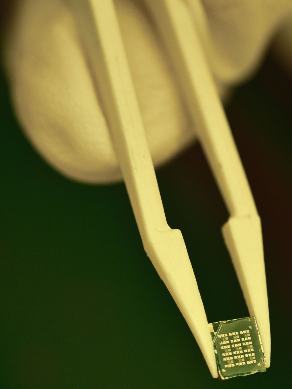Chip for topological quantum computer designed
October 5, 2011

Quantum spin Hall topological insulator (credit: Jeff Fitlow/Rice University)
Rice University physicists have developed a new method for making a “quantum spin Hall topological insulator,” a chip for future quantum computers that are based on “topological quantum computing.”
Topological designs are expected to be more fault-tolerant than other types of quantum computers because each qubit (quantum bit) in a topological quantum computer will be made from a pair of highly stable theoretical quantum particles called Majorana fermions that have a virtually immutable shared identity.
The elusive Majorana fermions were first proposed in 1937, although the race to create them in a chip has just begun. Physicists say the particles can be made by marrying a two-dimensional topological insulator to a superconductor.
Topological insulators are oddities; although electricity cannot flow through them, it can flow around their narrow outer edges. If a small square of a topological insulator is attached to a superconductor, the elusive Majorana fermions are expected to appear precisely where the materials meet. If this proves true, the devices could potentially be used to generate qubits for quantum computing, the physicists say.
The device is made from a commercial-grade semiconductor that’s commonly used in making night-vision goggles, the first 2-D topological insulator made from a material that physicists already know how to attach to a superconductor.
Ref.: Ivan Knez, Rui-Rui Du, Gerard Sullivan, Evidence for Helical Edge Modes in Inverted InAs/GaSb Quantum Wells, Physical Review Letters, 2011; 107 (13) [DOI: 10.1103/PhysRevLett.107.136603]